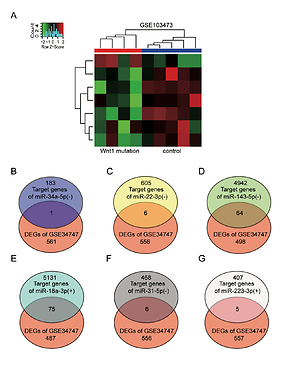Current issue
Archive
Manuscripts accepted
About the Journal
Editorial office
Editorial board
Section Editors
Abstracting and indexing
Subscription
Contact
Ethical standards and procedures
Most read articles
Instructions for authors
Article Processing Charge (APC)
Regulations of paying article processing charge (APC)
OSTEOPOROSIS / RESEARCH PAPER
ADCY2, ADCY5, and GRIA1 are the key genes of cAMP signaling pathway to participate in osteoporotic spinal fracture after the manipulation of Wnt signaling
1
The Affiliated Nanjing Hospital of Nanjing Medical University, China
2
The Affiliated Huai’an Hospital of Xuzhou Medical University and The Second People’s Hospital of Huai’an, China
3
The Second People’s Hospital of Lianyungang Affiliated to Jiangsu University, China
Submission date: 2019-12-11
Final revision date: 2020-07-06
Acceptance date: 2020-07-11
Online publication date: 2021-04-15
Corresponding author
KEYWORDS
TOPICS
ABSTRACT
Introduction:
Osteoporotic spinal fracture, characterized by high morbidity and mortality, has become a health burden for the aging population. The inactivation of the Wnt signaling has been proved to promote osteoporotic fractures. Our study is to identify the key genes, miRNAs, and pathways that possibly lead to osteoporosis and osteoporotic spinal fracture after the aberrant activation or mutation of Wnt signaling pathway.
Material and methods:
Impute R package was used to screen out the differently expressed genes (DEGs) and differently expressed miRNAs in GEO datasets. STRING and Metascape were used to construct protein-protein interactions (PPI) network, gene ontology (GO) enrichment and pathway enrichment. The relative expression of ADCY2, ADCY5, and GRIA1 in bone tissues was measured by RT-qPCR.
Results:
562 DEGs were screened out using Impute R package, and a PPI network involving the 562 DEGs was constructed using STRING and Metascape. GO enrichment and pathway enrichment showed that the 562 DEGs were associated with membrane protein-related signaling pathways. Then, 75 genes between the target genes of miR-18a-3p and 562 DEGs were overlapped using Venny 2.1.0. Finally, the cAMP signaling pathway was identified as the key pathway, whilst ADCY2, ADCY5, and GRIA1 were identified the key genes that possibly participate in osteoporotic spinal fracture after the manipulation of Wnt signaling pathway, which was further proved by their excessive downregulation in osteoporotic patients with spinal fracture.
Conclusions:
The results demonstrated that ADCY2, ADCY5, and GRIA1 were the key genes to regulate the cAMP signaling pathway in osteoporotic spinal fracture after abnormal Wnt signaling.
Osteoporotic spinal fracture, characterized by high morbidity and mortality, has become a health burden for the aging population. The inactivation of the Wnt signaling has been proved to promote osteoporotic fractures. Our study is to identify the key genes, miRNAs, and pathways that possibly lead to osteoporosis and osteoporotic spinal fracture after the aberrant activation or mutation of Wnt signaling pathway.
Material and methods:
Impute R package was used to screen out the differently expressed genes (DEGs) and differently expressed miRNAs in GEO datasets. STRING and Metascape were used to construct protein-protein interactions (PPI) network, gene ontology (GO) enrichment and pathway enrichment. The relative expression of ADCY2, ADCY5, and GRIA1 in bone tissues was measured by RT-qPCR.
Results:
562 DEGs were screened out using Impute R package, and a PPI network involving the 562 DEGs was constructed using STRING and Metascape. GO enrichment and pathway enrichment showed that the 562 DEGs were associated with membrane protein-related signaling pathways. Then, 75 genes between the target genes of miR-18a-3p and 562 DEGs were overlapped using Venny 2.1.0. Finally, the cAMP signaling pathway was identified as the key pathway, whilst ADCY2, ADCY5, and GRIA1 were identified the key genes that possibly participate in osteoporotic spinal fracture after the manipulation of Wnt signaling pathway, which was further proved by their excessive downregulation in osteoporotic patients with spinal fracture.
Conclusions:
The results demonstrated that ADCY2, ADCY5, and GRIA1 were the key genes to regulate the cAMP signaling pathway in osteoporotic spinal fracture after abnormal Wnt signaling.
We process personal data collected when visiting the website. The function of obtaining information about users and their behavior is carried out by voluntarily entered information in forms and saving cookies in end devices. Data, including cookies, are used to provide services, improve the user experience and to analyze the traffic in accordance with the Privacy policy. Data are also collected and processed by Google Analytics tool (more).
You can change cookies settings in your browser. Restricted use of cookies in the browser configuration may affect some functionalities of the website.
You can change cookies settings in your browser. Restricted use of cookies in the browser configuration may affect some functionalities of the website.



